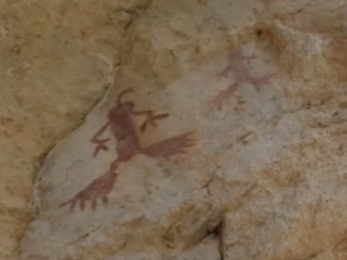I leave in a few hours to head back across the Pond. Here are a few thoughts on a productive trip to AP’s HQ and the University of Westminster conference.
On Friday, I went straight from the red-eye flight into AP’s offices, had some good meetings with the archive folks, and got invited to the company Christmas party here in Camden Town. If you know DC, you might think of Camden as sort of Adams Morgan on steroids. If you are from London, you might think of Adams Morgan as Dibley. I went back to the hotel before the party to set my head on a pillow for five minutes, and woke up three hours later…so much for the Christmas party.
Saturday morning was the first day of the “Apocalypse and Its Discontents” conference at the University of Westminster (between Oxford Circus and All Souls Church on Regent Street). The conference tackled a wide range of of topics on the subject of “apocalypse:” from fiction, to religion, to science.  Some presenters talked about the symbolism of zombies and other types of characters in popular movies and film. Others dealt with apocalyptic scenarios that we see in nonfiction media.
Some presenters talked about the symbolism of zombies and other types of characters in popular movies and film. Others dealt with apocalyptic scenarios that we see in nonfiction media.
My presentation on the Mennonite trek to Khiva appeared in the same session as an analysis of the film The Road (one of three presentations over the weekend on this story), and another on Carl Sagan’s apocalyptic warnings in the 1980s about nuclear winter.
Several speakers observed that there is a dichotomy between the end result of religious vs. secular apocalyptic stories. The final status of religious (i.e. Christian) apocalyptic scenarios is usually a renewed peace and bright future. This isn’t just from John’s Revelation – this can also be seen in Christian-inspired fiction works like Tolkien’s Lord of the Rings. Frodo’s adventure to Mordor leads Middle Earth to a new era, and an absence of the Enemy. Secular apocalypses, from Carl Sagan’s jeremiads to the movie Threads, tend to end with no relief in sight – only doom.
 Perhaps this is why Cormac McCarthy’s The Road, garnered so much independent interest from several scholars at the conference. The story is as dark as any post-apocalyptic tale. The cause of the world’s destruction is cryptic, and the ending is ambiguous as to whether there is hope. The story also has a spiritual side to it that has garnered a lot of debate.
Perhaps this is why Cormac McCarthy’s The Road, garnered so much independent interest from several scholars at the conference. The story is as dark as any post-apocalyptic tale. The cause of the world’s destruction is cryptic, and the ending is ambiguous as to whether there is hope. The story also has a spiritual side to it that has garnered a lot of debate.
If you are interested in seeing the slides and reading the transcript of my presentation, you can find it here: Apocalyptic Debacle or Christian-Muslim Paradigm?
As far as Cher goes, I was intending to see “Voyage of the Dawn Treader” at the Empire Theater at Leicester Square last night.
Unfortunately, Cher and Christina Aguilera showed up at the same theater for a premiere of their movie Burlesque. I could make a cheap shot about zombies, and Cher’s much-modified, taped-up face and inferno-colored hair, but that would be low-hanging fruit. I will only say that Dawn Treader was a great movie. (I caught it tonight)



